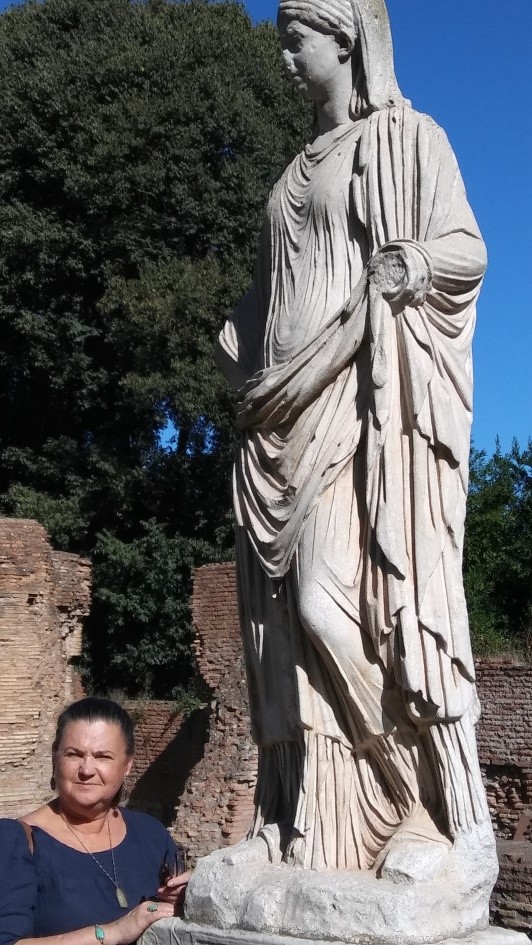 If there is one thing that gives a world some color in a book, it’s the use of expressions. A world’s terminology, vocabulary, nomenclature—even its cursing!—can create a vivid setting that pulls in a reader. In all my fantasies I try my best to weave in language that feels unique and organic to that world. So when I set out to write ROARING, a historical paranormal YA, I was absolutely thrilled to dive into slang from the 1920’s.
If there is one thing that gives a world some color in a book, it’s the use of expressions. A world’s terminology, vocabulary, nomenclature—even its cursing!—can create a vivid setting that pulls in a reader. In all my fantasies I try my best to weave in language that feels unique and organic to that world. So when I set out to write ROARING, a historical paranormal YA, I was absolutely thrilled to dive into slang from the 1920’s.
An iconic era.
Think about it! This was the era of “bee’s knees” and “old sport” and “doll face”—so many fun phrases that are still alive today. Although often we say them ironically, it doesn’t change the fact that these sayings became iconic to an entire era. There hasn’t been slang in another decade quite like the 20’s.
That’s also a lot of pressure. Not only did I have to write a book about paranormal creatures like sirens, manticores, gorgons, vampires, and the like, but I needed to stay true to history. How did people talk back then? And how could I weave in their fun turn-o’-phrase and still make it digestible to the reader?
It started with research.
I’d consumed my fair share of fictional works set in the 1920s. The Great Gatsby (obviously!), Thoroughly Modern Millie, Chicago, The Diviners—each piece showcased the Jazz Age in all its gilded glory. But those just scraped the surface of the actual time period. What made the Roaring 20’s “Roaring”? Was it the explosion of economic and cultural growth? Maybe the revolutionary technology of its time and the women’s suffrage movement that threw America into the age of “modernism” and progression? Or maybe the surge of rebellious youths, the secretive world born from Prohibition, or the rise of organized crime?
So I googled, and fell deep into a hole of the histories of speakeasies, of the birth of jazz, and of the lifestyle of flappers. As I dove into this world that felt less like history, and more like fantasy, I realized I didn’t have to change very much at all to create a story in which monsters ran with mobsters. Indeed, these mob bosses and the infamous speakeasies sounded like they made up America’s very own netherworld. There’s even a book, Chicago by Gaslight, that recounts the history of Chicago’s netherworld and it inspired a few ideas. Inserting paranormal creatures into this living nightmare of booze, dope, tommy guns, and criminal overlords was as easy as writing a story about dragons and princesses. They went hand-in-hand.
In my research, I stumbled across informative articles and websites that highlighted the slang and bookmarked them immediately. Now that I had a grasp of the Roaring 20s vibe, I was reading to take a stab at crafting my historical world.
A glossary of Roaring terms.
One of my favorite articles I used was “59 Quick Slang Phrases From The 1920s We Should Start Using Again”. Immediately I wanted to find an excuse to use every single one of these fun phrases. But ones like “petting pantry” (a cinema or movie theatre) or “Tell it to Sweeney!” (“Tell it to someone who would buy that!”) were so obscure that they couldn’t be woven into the story very easily. Yet some terms like “darb” (something wonderful) or “giggle water” (liquor) were simple enough to be picked up from context clues.
My editor and I discussed whether or not we should include some of the more obscure ones. After all, who would know “iron your shoelaces” meant using the bathroom? In the end, we decided to put a short glossary of terms into the front of the book for reference. It helped for some of the odd ones, but I tried my best to make it easy on the reader.
Some crowd favorites.
I’ve included some of my favorites taken directly from my book…can you guess what they mean?
She took the glass from my hands and tipped her chin toward a lone man in a corner. “Go get his order. He came in thirty minutes ago but hasn’t ordered a damn thing. My drum is not for dewdroppers.”
I dropped the change off at the table of a couple wrapped up in each other. They were a little zozzled, but more drunk on love than anything else.
“All right, you kids,” Belva’s voice called from the back of her boutique. “Hurry up now, and make whoopee. The night is still young—but she won’t last for long!”
“Oh, for God’s sake, Clemmons. Bank’s closed! We don’t have time for any petting in the hall closet.” Blushing from head to toe, I pulled away from Colt and smoothed down my dress.
If you choose to pick up ROARING, I hope you enjoy it and appreciate the slang so indicative of this revolutionary time period of American history!
GIVEAWAY:
A signed print copy of ROARING and artwork prints of featured scenes from the book will go to one person who comments.











interesting info
I was wondering where you picked up the 1920s slang used in “Roaring.” It made your characters more real, especially because you used first-person voice. Thanks for sharing your writing approach and resources!
Can’t wait to read!!!
How very fun, Lindsey! Will have to check this out–sounds like it might be right up DD’s alley! And love hearing about how you researched to get the language and cadence for this book just right!